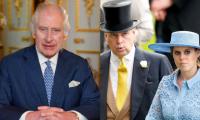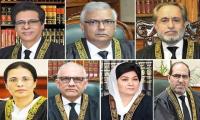The famous phrase “it’s the Economy, Stupid,” coined by the former US President Bill Clinton in 1992 captures the essence of today’s global world order. Economics has always played a key role in defining political realities at national and global levels. For example, the founding father of USSR, Vladimir Lenin noted that “politics is determined by economics, in the final instance”. But, in the 21st century the economics has become even more important than ever before. The size of the economy, per capita income, unemployment rate, inequality coefficients, growth rate, exports, FDI and competitiveness are no longer economic markers but are the vital signs for any nation. Developing countries are vying to attract greater inflows of FDI, capture larger share of exports in the global trade, and outperform each other in labor productivity, competitiveness and growth rates. It will not be incorrect to say that today economic security of any nation is the key driver of its national security.
In this context, let’s have a look at the emerging scenario in South Asia. In 1999, Pakistan was the leading economy of South Asia with highest per capita income of $618, followed by India $437 and Bangladesh $397. Pakistan was the first country in South Asia to undertake structural economic reforms in 1990-91 under first Nawaz Sharif government which were later followed by India. But unfortunately, Pakistan plunged into a decade of political instability, thanks to Article 58-2(b) which gave president the power to dissolve Parliament, as a result not a single elected government was allowed to last longer than two and a half years. Today, Pakistan has dropped to third position in terms of per capita income behind India and Bangladesh. In Pakistan per capita income grew by 165% during this time while in India and Bangladesh it grew by 352% and 322%, respectively. These stark difference in fortunes can be explained by the fact that in Pakistan exports and FDI grew by 140% and 160%, respectively, in last two decades. While in India, exports and FDI saw a tremendous growth of 719% and 1627% and Bangladesh both indicators grew by 680% and 800%, respectively. In terms of ‘corruption’ and ‘governance’, India and Bangladesh are neither more transparent nor more efficient than Pakistan. The only difference is political stability and continuity of policies.
In 2013 when PML-N assumed power, Pakistan was in economic, social and security crisis. Economy faced serious stagflation and low growth, 18-20 hours of power outages and terrorist incidents were highly frequent. Newsweek listed Pakistan as one of the most dangerous country in the world in 2013. Due to the efforts of PML-N government, two major bottlenecks in the growth of economy, energy and infrastructure, were removed, tax collection doubled from Rs2 trillion to Rs4 trillion which created space for PSDP (development budget) to increase from Rs300 billion to Rs1,000 billion, inflation stabilised around 4%, and GDP growth rate increased from 3% to 5.8% in 2017-18, highest in the last thirteen years. In January 2018, World Bank projected that Pakistan’s economy would achieve 6% growth rate in 2019 and 2020. PML-N government with its experience and vision restored investors’ confidence and trust in Pakistan’s potential and by 2018 it was being acclaimed as one of top tourist destinations. Pakistan was moving forward under Vision 2025 to be among top 25 economies of the world by 2025. PWC in its global report had endorsed that with this pace Pakistan would be among top 20 economies by 2030.
Unfortunately, in 2017 events unfolded aimed at removing PM Nawaz Sharif from office, pushed Pakistan into a cycle of political uncertainty causing billions of dollars of foreign investment, which had lined up after CPEC, to shy away thereby putting pressure on our foreign reserves, while our imports soared due to increase in the economy’s growth rate. Moreover, many of the gains made in last four years were compromised due to the political crisis and controversial elections. We as a nation unfortunately are yet to learn the link between political stability, continuity of policies and economic development. Our problem is neither politics nor economics, its political economy. We need stability in politics and economics.
New PTI government, which was handpicked, promised a great deal of change in first 100 days, instead it came out clueless about Pakistani economy. In any other country, if a newly elected government presented two budgets in a span of six months, it would have faced a wrath of criticism from all quarters of society. The second mini-budget is an admission of the failure of the first mini-budget. It has become abundantly clear now that PTI was not prepared at all when it was offered government in the plate. Thus, all the campaign promises of having a team of experts and homework were nothing but a hoax. Contrary to Imran Khan’s logic of greatness lying in U-turns, economic development is a function of stable and consistent policies. PTI government has made uncertainty the only certain thing in town by changing its economic policies at regular intervals.
PTI government has flipped flopped on the issue of whether or not non-tax filers should be allowed to buy assets so many times that it is hard to keep count. How can you assure an investor that a new policy that the government has just announced will not be changed again in few months? The government has taken eight months and yet hasn’t come out clearly on IMF programme, keeping the markets undecided. On top Pakistani PM has been telling international investors that there is rampant corruption and money laundering in Pakistan. State institutions have been given licenses to hound entrepreneurs and businesses. That is why the positive sentiment and vibes about the economy are at its lowest at the moment. Economy comprises of two S’s, sentiment and structure. If market sentiment is destroyed, nothing can make the structure to move. Money from the markets has either fled or gone underground.
The second supplementary finance bill, i.e. mini-budget of PTI, is like an old honey in a new bottle. The mini-budget offers big old businesses tax and custom incentives in the hopes that once they accumulate enough wealth, they may undertake new investments and create employment. This is known as supply-side ‘trickle-down economics’. Businesses can invest their newly created super-profits in financial or land markets instead of undertaking productive investments, therefore, providing these huge tax holidays to businesses provide no guarantee that rest of the economy and especially the majority of Pakistanis, i.e. middle and working classes will benefit from such pro-rich policies. Supply-side trickledown economics has miserably failed in the US and the Europe in last couple of decades. It led to a global economic meltdown in 2008. There is no reason to believe that the policies will work in the context of Pakistan.
PTI government has totally ignored the demand side of the economy. In fact, it has substantially cut down, Public Sector Development Programme which is a key driver of the ‘effective demand’ in the economy. During July-Feb period, PTI government released only Rs81 billion in local contribution for PSDP, which is 27% of Rs358 released by PML-N government during the same period. In fact, PTI government is undertaking policies to slow down the demand in the economy. It wouldn’t be incorrect to say if PML-N government had its foot on accelerator pedal of economy, PTI government is pressing the brake pedal with full force. Growth has crashed and the inflation is at record high, according to PTI government’s own conservative estimates, it is up to 8.24%. While from 2014-2018, inflation on average was under 4 %.
Promoting inflation in the domestic market while global oil price is stable at $56 per barrel is nothing but a conscious anti-poor policy of the PTI government. This self-induced inflation is like a tax which hurts the poor segments of society disproportionately more as compared to rich households. This is due to the fact that poor households do not own return-bearing assets such as bonds, land or other financial instruments. Instead they only hold cash and when rupee loses its value, poor households lose the most. While rich may still be able to offset their losses because they own return-bearing assets such as bonds and dollar accounts.
Middle- and working-class families of Pakistan are struggling to make both ends meet given such rapid price hikes of daily essentials ranging from food items to medicines. Not to mention, the prices of electricity and gas have touched the record high having serious consequences for both domestic and industrial consumers. Even the staunchest supporters of PTI admit that price hikes are out of control and they are utterly disappointed on the performance of PTI government. While, finance minister helplessly acknowledges that working- and middle-class Pakistanis will suffer and have to go through the misery.
While, PM Imran Khan claimed ignorance but in reality, it was the conscious policy of the government to devalue rupee on the pretext that it would help increase exports, but despite 30% devaluation the growth of exports has been minimal, and it has played havoc with the economy. While devaluation of rupee led to increase in Pakistan’s debt liabilities and our GDP shrunk from $315 billion to $250 billion overnight. Since PTI government has taken office, the external-debt has increased by 17% and it is up to Rs2.4 trillion. According to estimates of independent economic experts, PTI government is expected to amass more debt in next three years than what PML-N accumulated in their full term of 5 years. This is ironic because PTI criticised PML-N government on the issue of debt, but it is clear now that PTI had no understanding of economy. Its criticism was merely to malign PML-N and now when they have a chance to prove their mettle, they are failing miserably.
In 2019, where are we heading? Large scale manufacturing has contracted for first time in over seven years, agriculture sector is under performing due to increase in the prices of inputs particularly fertilizers, wholesale and retail sectors are under performing due to lackluster industrial activity and massive devaluation, transport and logistics sector is depressed, inflation is increasing rapidly and highest since 2015, cost of doing business is sky high. Circular debt has increased from Rs1.1 trillion to Rs1.4 trillion at twice the rate than what it was PML-N government. FBR is facing record shortfall in revenue collection of Rs237 billion in first eight months. S&P has downgraded Pakistan’s credit ratings to B-, while under PML-N government Pakistan’s credit ratings steadily improved and it was B+. After achieving thirteen-year high growth of 5.8% in 2018, Pakistan’s economy is headed for around 4% growth and even less for coming years. India’s economy is growing at an average of 7% for last several years, Bangladesh’s economy is growing at 7%, and can we afford to grow at 4%?
These are the undisputed facts, which Mr. Imran Khan neither rebut nor seem to comprehend. Therefore, he opts for below the belt personal attacks against opposition leaders, including myself. But Mr. Khan’s attack would not stop me from separating myth from the reality and exposing his incompetence to deal with the economy of Pakistan. I would like to end by quoting Abraham Lincoln and it has a message for the selected PM Khan: “You can fool all the people some of the time, and some of the people all the time, but you cannot fool all the people all the time”. Mr. Khan and his party can fulfill their wishes to ridicule and victimise opposition as much as they like but it will not help because “It is the Economy, Stupid”.
The writer is MNA, former minister for Interior/Planning & Development email: betterpakistan@gmail.com
Mir Attaullah Lango of Independent Panel won presidency with 457 votes
Katcha areas of Rajanpur are nothing but a liability says DC
Dr. Kamran Qureshi, stresses media’s responsibility in raising awareness
Truck Transport Union's strike has brought daily transport of 15,000 tons of coal to complete halt
Police posts and stations have come under attacks multiple times in past but all those incidents happened at night
Cases are being re-examined by DSP Siraj Lashari, officer from Rapid Response Force Hyderabad







